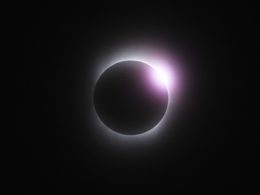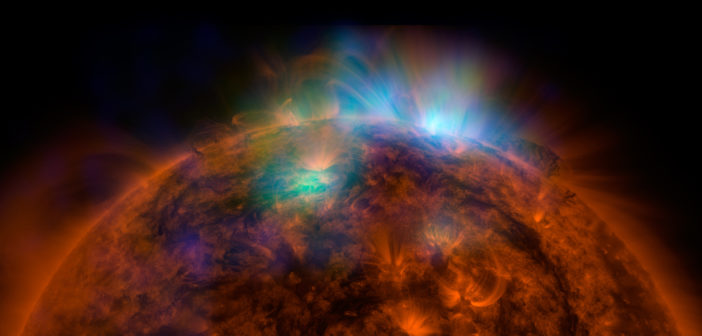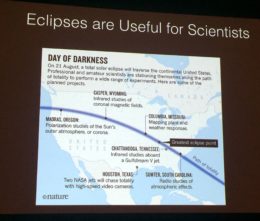Greetings from the 16th meeting of the High Energy Astrophysics Division (HEAD) of the American Astronomical Society in Sun Valley, Idaho! This week, I will be writing updates on just a few of the events at the meeting and posting each morning. The usual posting schedule for AAS Nova will resume next week.
Public Talk: Revealing the Hidden High-Energy Sun
The HEAD meeting unofficially kicked off this afternoon with a public talk given by Rachel Osten of the Space Telescope Science Institute. Osten’s lecture provided the public with an explanation of why 400 high-energy astronomers have invaded their small ski-resort town: because Sun Valley lies in the path of totality for August 21st’s solar eclipse, and eclipses mean exciting opportunities for high-energy science!
Osten pointed out that astronomy has a long, hallowed history of demonstrating that we aren’t that special. We’ve learned that the Sun doesn’t revolve around Earth, that we’re not located in a special center of the universe, and the matter we’re made up with isn’t even the dominant type of matter in the universe! But eclipses — this is a case where we are special. The fact that the Moon is 400 times smaller than the Sun, but also 400 times closer — such that the two bodies have the exact same angular size — is extremely lucky. No other planet in our solar system experiences eclipses like what we get to witness on Earth.
So what science can be done when the Sun’s disk is blocked by the Moon? This is an excellent time to observe the solar corona, which is normally too faint to be seen when the Sun’s disk isn’t blocked. The corona — the Sun’s outer atmosphere — is 1–3 million Kelvin. This incredibly hot, magnetized gas can take a variety of shapes depending on our timing within the 11-year solar cycle, and it can change rapidly based on the localized solar activity.Osten herself studies the hot coronae of other stars besides our Sun. The high levels of activity in young stars in Orion, for instance — complete with X-ray flares with temperatures of 50–100 million Kelvin — can reveal information about what the Sun was like in its earlier years. And the behavior of the coronae in stars that host planets is important to know to determine the planets’ habitability: if stars emit too many X-ray flares, for instance, they can strip their planets’ atmospheres.

The diamond ring during a total solar eclipse in 2009 in Japan. [kubotake]
As a final word, Osten urged us all to enjoy the eclipse. During the question session, an audience member asked what data she’ll be taking as a professional astronomer during the event. Her paraphrased response: “Tomorrow I won’t be a professional astronomer. I’ll be an amateur astronomer with all of you, being awed by the experience.” I look forward to the same!




1 Comment
Pingback: 2017 HEAD: Welcome! – MeasurementDataBases for Industry & Science